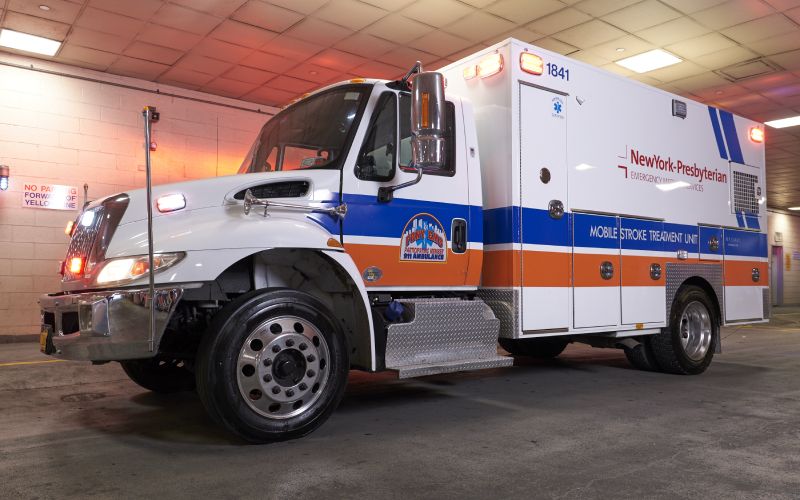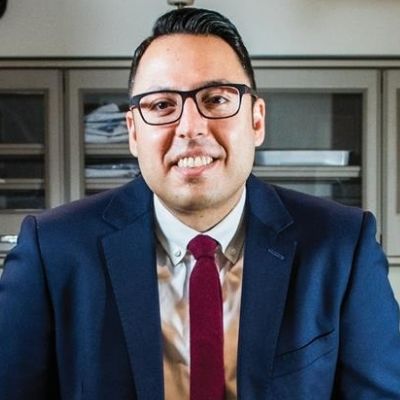Patients treated by mobile stroke units (MSU) were more likely to completely recover from a stroke within a 24-hour timeframe or show no signs of injury on an MRI, compared to those receiving standard treatment, according to new research published in the Annals of Neurology. MSUs also shaved more than 30 minutes off the critical time between the onset of symptoms and treatment with clot-dissolving medications, says lead study author Babak Benjamin Navi, MD, MS, Medical Director of the Stroke Center at NewYork-Presbyterian/Weill Cornell Medicine.

The development of NewYork-Presbyterian’s MSU program, one of approximately 25 worldwide and the first on the Eastern Seaboard of the U.S.
“One in four patients recovered within 24 hours and one in six had a true averted stroke—not even a trace on imaging,” says Dr. Navi. “That's way higher than it used to be because we’re so much faster in our treatments.”
One in four patients recovered within 24 hours and one in six had a true averted stroke—not even a trace on imaging. That's way higher than it used to be because we’re so much faster in our treatments.
— Dr. Babak Navi
Speed is Critical
Research shows that a patient’s odds of a full or almost full recovery from stroke is 70% if they’re treated with thrombolysis in the first 60 minutes—known as the “golden hour”—after the onset of the event. Patients can benefit from the clot-busting medication, tPA (tissue plasminogen activator), for up to four and a half hours after symptoms start.
“If you treat within the golden hour, some studies indicate that the patient is three times as likely to have a good neurological outcome than if they were treated, say, in the last hour when they would be eligible,” says Dr. Navi. “The sooner you treat someone, the more effective the drug is and the safer it is.” Historically only 1% of U.S. patients have received treatment within 60 minutes.
First introduced in Germany, MSUs have proliferated in the last decade. These specialized ambulances have health professionals with expertise in acute stroke care, stroke medications and a CT scan machine.
If you treat within the golden hour, some studies indicate that the patient is three times as likely to have a good neurological outcome than if they were treated, say, in the last hour when they would be eligible. The sooner you treat someone, the more effective the drug is and the safer it is.
— Dr. Babak Navi
The development of New-York-Presbyterian’s MSU program, one of approximately 25 worldwide and the first on the Eastern Seaboard of the U.S., was led by Matthew Fink, MD, Neurologist-in-Chief at NewYork-Presbyterian Hospital/Weill Cornell Medicine.

Left to right: Carla Sherman, RN, Cinthia Holland, RN, Matthew Fink, MD, Saad Mir, MD, Babak Navi, MD, Michael Koppel, EMS, and Christopher Brossart, EMS.
“Dr. Fink was the one who had the idea for us to do this and made it happen,” says Dr. Navi. “He had the vision that this was something that could happen in New York and could benefit patients here. And he worked with the hospital to obtain donor funding.”
The program was launched in 2016 and is operated jointly by NewYork-Presbyterian, Weill Cornell Medicine, Columbia, and the Fire Department of the City of New York.
Study Details and Next Steps
For the study, physicians evaluated data from a multicenter trial (BEST-MSU) from 2014-2020 including 1009 patients. Receiving care through a MSU increased the odds of avoiding a stroke compared to standard care (18% vs 11%) and recovery from stroke within 24 hours (31% vs 21%). To evaluate the data, Weill Cornell Medicine and NewYork-Presbyterian physicians were joined by those at several other medical centers, including UTHealth Houston and Memorial Hermann-Texas Medical Center.
The research team is currently analyzing the same dataset to determine if MSU’s are worth their hefty price tag. These life-saving units cost about $1 million and another $1 million each year to operate. Funding them is critical to opening the door to more widespread use.
“That's really what's preventing these mobile stroking units from proliferating and becoming entrenched and standardized within 911 systems,” says Dr. Navi. “The vast majority of this is funded through philanthropy.”
With the new data, the focus should shift to policy makers, says Dr. Navi. He hopes that Medicare will assign MSU services a billing code to provide for reimbursement.
Part of the calculation may entail where MSUs will be best deployed. The data looks different depending on where they operate.
“Mobile stroking units are not going to be for everywhere,” Dr. Navi says. “They have only been shown to be useful in urban and a few suburban areas. The more densely populated the area, the more strokes are occurring, the more impact the mobile stroke unit can have and the more cost effective it is.”
Like stroke care itself, Dr. Navi says there’s no time to wait. “We have the data showing it's better. We're probably going to have data very soon showing that it's also cost effective,” he says. “So why don't we expand these programs and help more patients? We need to institute change.”




